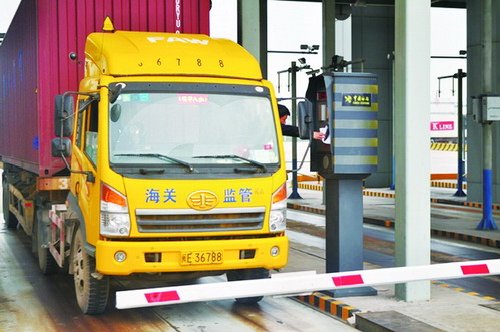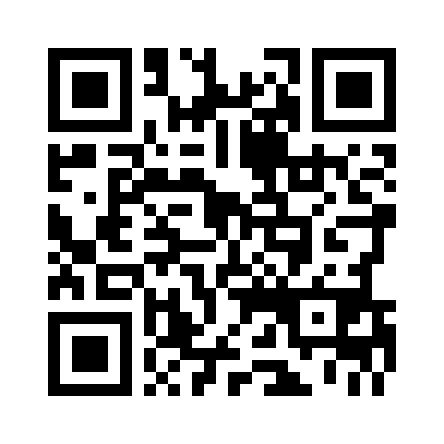Specifically, the regulation of the use of transport vehicles with electronic license plate, container supervision using electronic lock. When the transport equipment through the customs electronic bayonet, the Internet of things equipment can automatically collect license plate number and container number and other information, and with the customs clearance instructions for comparison, to achieve automatic check release; for transit import and export goods, turn The customs will seal the information written into the electronic lock, into the customs port automatically identify the seal, and the customs background data comparison, to achieve automatic check off release.
In the use of Internet of things technology, customs supervision can be achieved without bayonet clearance, greatly accelerating the speed of the bayonet, improve the efficiency of customs supervision and customs clearance efficiency.

"Internet" extension "things"
Internet of things refers to the device through the device in various types of objects on the RFID tags, sensors, global positioning system, laser scanner and other information sensing equipment, the use of sensor technology, wireless communication technology, according to the agreement to connect objects with the Internet , To complete the information exchange and communication behavior, and ultimately to achieve intelligent identification, positioning, tracking, monitoring and management in one of the network. According to the different aspects of information generation, transmission, processing and application, the architecture of Internet of Things can be divided into four layers from low to high, namely, perceived recognition layer, network construction layer, management service layer and integrated application layer.
The perceptual identification layer is responsible for information collection and signal processing. Through the perception of recognition technology, so that items "speak, release information", which is different from other networks of things the most unique part of the network. The information generation device of the perceptual identification layer includes both RFID tags, sensors, positioning systems and the like that use automatic generation methods, as well as various intelligent devices using manual generation, such as smartphones, PDAs, multimedia players, laptops Wait. The perceived recognition layer is located at the bottom of the four-layer model of the Internet of Things, which is the basis of all the superstructure.
The network construction layer directly accesses and transmits the information from the perceptual identification layer through the basic network facilities such as the existing Internet, the mobile communication network and the satellite communication network. In the four-layer model of the Internet of Things, the network construction layer connects the perceived recognition layer and the management service layer, and has the powerful link function.
Needless to say, the network is one of the most important infrastructure in the Internet of Things, which can be divided into the following four aspects. First, the Internet / telecommunications network, it is the core network of things, platform and technical support surface; Second, wireless broadband network, its own WiFi / WiMAX and other wireless broadband technology covers a wide range of faster transmission for the Internet of things Three low-speed network, which includes ZigBee / Bluetooth and other low-speed network protocol, to adapt to the ability of things in the lower nodes of the low-rate, low communication radius, low-speed, low-cost, low- Low computing power and low energy sources. Fourth, mobile communication network, it will become a "comprehensive, anytime, anywhere," an effective platform for information transmission, high-speed, real-time, high coverage, diversified multimedia data, Items touch the net "to create conditions.
In the environment of high-performance network computer, the management service layer can integrate the massive information resources in the network into a large-scale intelligent network which can be interconnected by computer. The management service layer solves the problem of how data is stored (database and mass storage technology), how to retrieve (search engines), how to use (data mining and machine learning), how to be unused (data security and privacy protection). Management service layer is located in the sense of recognition and network construction layer, in the integrated application layer, is the source of wisdom of things. People often use the Internet as the name of "smart", such as smart grid, intelligent transportation, intelligent logistics, and the wisdom of which comes from this layer.
Integrated application layer is the user interface of the Internet of Things system, through the analysis of the processed data, to provide users with a wealth of specific services. Specifically, the integrated application layer receives the information from the network construction layer, and the information processing and decision-making, and then through the network construction layer to send information to control the perception of the identification layer equipment and terminals. The application of Internet of things to "material" or the physical world as the center, covering items tracking, environmental awareness, intelligent logistics, intelligent transportation, intelligent customs and other fields.
RFID system "mystery"
RFID is mainly used in the Internet of things in the perception of cognitive layer, radio frequency identification (RadioFrequencyIdentification) referred to, is available for wireless communication using electromagnetic waves (radio frequency) to automatically identify the individual non-contact automatic identification technology, such as daily life Common access control system.
In terms of system composition, the most basic RFID systems include RFID tags, RFID readers, antennas, and computer systems for recording and processing information. In the working principle, the RFID reader sends an electronic signal through the antenna. After receiving the signal, the RFID tag will transmit the stored identification information, and the RFID reader will receive and identify the information sent back by the electronic tag through the antenna. The RFID reader sends the recognition result to the host.
RFID tags are also known as smart tags, refers to the use of radio frequency identification technology, Amotech has a certain capacity storage chip tags. In general, a complete RFID tag is made up of chips, antennas, paper media (or plastic media) substrates. Among them, the chip has two data areas, namely the ID area and user data area. The ID area is used to store the unique ID code UID (stored in the ROM when the chip is built, can not be modified); the user data area is for the user to store data, can read and write, modify or increase the operation. At the same time, RFID electronic tag antenna is to achieve the RF signal space and the establishment of wireless communication connection equipment.
It is worth noting that although the current application of a wide range of non-contact IC cards (such as the commonly used second-generation ID card, urban transport card, etc.) and the general RFID tags sometimes use the same frequency (13.56MHz), but Because the wireless communication protocol between the two and the reader is different, so the two can not be common, and we can not confuse the two. Not only that, non-contact IC card in the communication distance, shape, management object, unit price and other aspects are different with the RFID tags.





